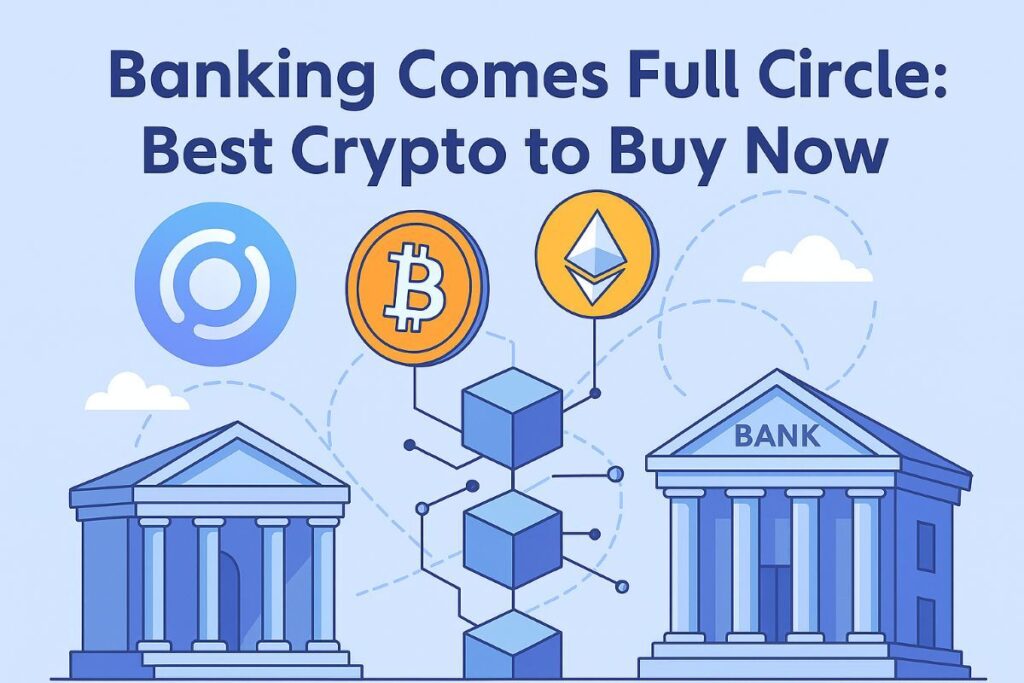In an era where digital finance is rapidly evolving, significant milestones in the integration of blockchain technologies with traditional financial systems are shaping the future of banking. As the world continues to embrace digital currencies, companies like Circle are at the forefront of this transformation, seeking innovative ways to bridge the gap between traditional finance (TradFi) and decentralized finance (DeFi). With the potential to revolutionize how financial systems operate, the development of digital currency infrastructures like the First National Digital Currency Bank may offer promising opportunities for investors and innovators alike.
Exploring Circle’s Initiative Towards a Digital Currency Bank
Circle’s pursuit of a national trust bank charter signifies a pivotal moment in the financial landscape following its impressive public offerings (IPO) valued approximately at $18 billion. This strategic move to establish the First National Digital Currency Bank, N.A. aims to enhance the management of Circle’s USDC reserves while potentially redefining asset custody for institutional clients. Current reserves managed by banking giants BNY Mellon and BlackRock may soon benefit from more streamlined in-house oversight, bolstering trust among institutional players.
Maintaining compliance with regulatory standards is a cornerstone of Circle’s strategy, as evidenced by its proactive measures to obtain licenses across various jurisdictions. Achievements include the acquisition of the first NYFDS BitLicense in 2024, adherence to the European Union’s MiCA framework by 2025, and provisional approval from Abu Dhabi authorities for money services. Circle’s CEO, Jeremy Allaire, advocates for creating a transparent, efficient financial system accessible via the internet, aligning with the overarching trends in U.S. regulations, such as the GENIUS stablecoin bill progressing through Congress.
The Evolving Dynamics of Traditional Finance
Traditional finance institutions are increasingly recognizing the potential of blockchain as a solution to longstanding systemic inefficiencies. As highlighted by Stani Kulechov, founder of Aave, blockchain offers unparalleled global access to digital financial products, challenging the conventional, jurisdiction-bound financial models. Despite the promise, challenges such as fragmented interoperability remain, necessitating solutions like Chainlink’s Cross-Chain Interoperability Protocol (CCIP) to enable seamless blockchain integration.
DeFi protocols, according to Kulechov, could emerge as pivotal global financial utilities, overcoming barriers presented by isolated systems. This integration of blockchain principles into traditional finance could redefine the competitive landscape, pushing TradFi to incorporate crypto-native values of transparency and accountability.
Institutional Stablecoins: Competing with Crypto-Native Alternatives
Speculations around a consortium of banks, including JPMorgan and Bank of America, exploring stablecoin issuance underscore the necessity for TradFi to embody cryptocurrency principles to remain competitive. Circle, with its extensive regulatory reach across 46 states and a robust $USDC market cap, represents a formidable competitor in this space. New entrants from TradFi face significant challenges in gaining a foothold in a market where the first-mover advantage is substantial.
As traditional banks strategize their blockchain ventures, emerging altcoins present potential investment opportunities amidst these transformative shifts.
Potential Altcoins Poised for Growth
1. Best Wallet Token ($BEST) – Empowering Web3 Wallets
Best Wallet offers a robust solution for secure crypto transactions, leveraging its native $BEST token to enhance functionality. Users benefit from reduced transaction fees, increased staking rewards, and exclusive presale access within a secure Web3 wallet environment. As the digital currency ecosystem grows, $BEST could witness significant value appreciation.
2. Snorter Token ($SNORT) – Discovering Solana Meme Coins
For enthusiasts seeking high-risk, high-reward meme coins, Snorter Bot and its $SNORT token provide essential tools for identifying and trading Solana-based meme assets. Offering features like trading alerts, automated sniping, and risk mitigation, $SNORT is poised for notable gains as it taps into the vibrant underground trading scene.
3. World Liberty Financial ($USD1) – The Stablecoin of Ambitions
Endorsed by Donald Trump, World Liberty Financial and its stablecoin $USD1 represent intriguing components of a broader crypto strategy, potentially driving significant investment and development within the ecosystem.
Circle’s Future Prospects and Industry Impact
As Circle’s application for a trust bank charter undergoes regulatory scrutiny, approval could solidify its role as a bridge between traditional and decentralized finance. The implications for financial ecosystems are profound, promising significant developments as regulatory advancements support the growing integration of DeFi.
FAQs
What are the benefits of Circle obtaining a bank charter?
A bank charter would allow Circle to directly manage its USDC reserves, ensuring greater control and transparency. This move could increase trust among institutional investors and enable Circle to offer sophisticated asset custody services.
How does blockchain improve traditional financial systems?
Blockchain technology enhances financial systems by enabling secure, transparent, and efficient transactions. It reduces the need for intermediaries, lowers costs, and provides global reach, overcoming limitations of traditional financial models.
Could cryptocurrency replace traditional finance?
While cryptocurrency offers significant advantages such as decentralization and transparency, it is unlikely to replace traditional finance entirely. Instead, a hybrid system integrating the best aspects of both worlds is more feasible, promoting innovation and inclusivity.
Is investing in altcoins risky?
Investing in altcoins entails risk due to market volatility and the potential for rapid value fluctuations. Thorough research, understanding of market trends, and risk management strategies are essential for informed investment decisions.

